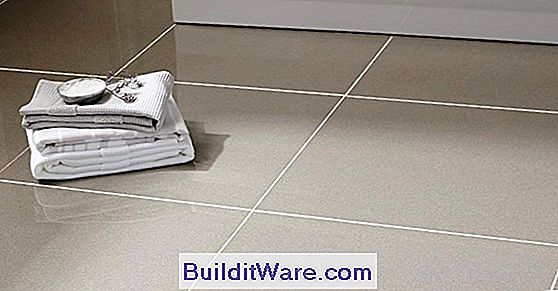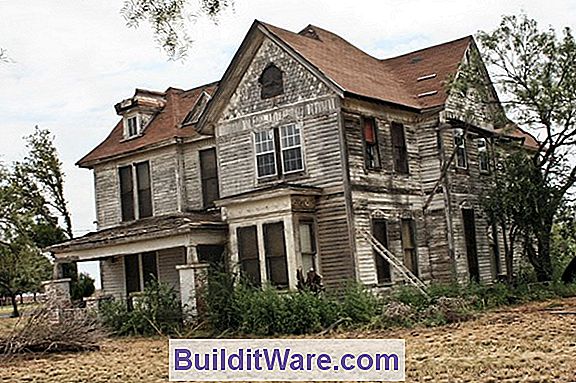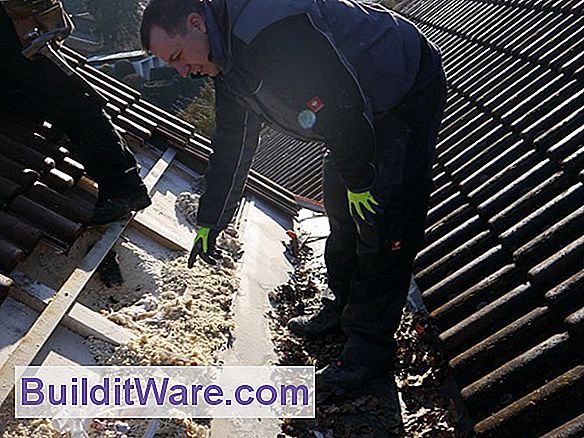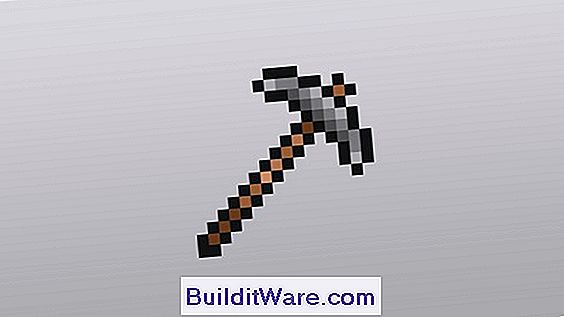Tile Floor Underlayment-Optionen

Die Materialien, die unter der Fliese verborgen liegen, bestimmen, ob die Fliese Jahrhunderte oder nur ein paar Jahre halten wird. Ein stabiler, fester Unterboden; flache und gleichmäßige Unterlage; Klebstoff, der hart greift; und langlebiger Mörtel tragen alle zu einer dauerhaften Fliesenarbeit bei.

Fliesenboden-Unterlagsmaterialien
Wenn ein Boden fest ist, kann es möglich sein, direkt darüber zu fliesen. Wenn die vorhandene Oberfläche jedoch nicht stark genug ist oder wenn der Bereich nass wird, installieren Sie Materialien, die speziell zum Stützen von Fliesen und / oder zum Aushalten von Feuchtigkeit entwickelt wurden.
Cement Backerboard
Einige Profis installieren die Fliese auf die altmodische Art und Weise, indem sie eine dicke Mörtelplatte einfüllen und die Kacheln direkt in sie einlegen - ein zeitraubender Vorgang, der besondere Fähigkeiten erfordert. Heute können Hausbesitzer die gleiche Feuchtigkeitstoleranz und -festigkeit erreichen, indem sie Bögen aus Zementrückwand auflegen.
Zement-Backerboard gibt es in zwei Varianten. Beide bestehen in erster Linie aus Portland-Zement, der seine Festigkeit behält, auch wenn er mit Wasser getränkt ist. Faserzement Backerboard hat Fasern im ganzen Körper laufen und ist glatter.
Netzbewehrter Zementrücken ist im Grunde genommen eine Zementplatte, die durch ein eingebettetes Glasfasergeflecht zusammengehalten wird, das sich um beide Seiten wickelt; Dieses Brett hat eine sehr raue Seite und eine, die ziemlich glatt ist, aber entsteint. Beide Typen sind in Dicken von 1/4 Zoll bis 5/8 Zoll und in Bögen in verschiedenen Größen erhältlich.
Befestigen Sie jede Art von Zementunterlage mit speziellen Backerboard-Schrauben, die stark sind und leicht bündig mit der Oberfläche ausgerichtet werden können. Standard-Schnellbauschrauben sind wesentlich schwieriger bündig zu fahren und neigen zum Bruch. Treiben Sie die Schrauben mit einem Bohrer an, der mit einem Schraubendreherbit ausgestattet ist. Fugen zwischen Backboardteilen mit Glasfasergewebe und Thinset-Mörtel abdichten.
Sperrholz Unterboden
Bodenbelag aus Keramik oder Stein kann auch auf Sperrholz montiert werden, sofern die Bodenstruktur fest ist und die Fliesen nicht sehr nass werden. Wenn Feuchtigkeit ein Problem ist, ist es am besten, Keramik- und Steinfliesen auf der Zementunterlage zu installieren, da das Sperrholz im nassen Zustand aufquellen wird.
Sperrholz ist kostengünstig, leicht zu schneiden und zu installieren und kann eine sehr glatte Oberfläche bilden. Sperrholz für Unterlage hat eine Reihe von kreuzförmigen Markierungen, die es einfach machen, Schrauben oder Nägel in einem Gittermuster zu fahren.
Vorgestellte Ressource: Finden Sie einen vorab geschirmten lokalen Fliesenboden Pro
FAQ - 💬
❓ What is best underlayment for tile floor?
👉 What Underlayment is Best for Tile? For tile flooring where a thinset is used, the best solution is a rubber-cork underlay. You can also install ceramic tiles directly over plywood or a cement board. Rubber cork underlay is designed for crack suppression.
❓ What do you put underneath a tile floor?
👉 Underlayment is something you put on top of your substrate to prepare it for tiling. The substrate (or subfloor) is the ground, whether it's made of plywood or cement. Cement board or backer board are the most standard underlayments. They come in various thicknesses for different spaces.
❓ How thick should ceramic tile underlayment be?
👉 1 ⅛ inches thickA good subfloor needs to be durable, level, at least 1 ⅛ inches thick, and free from residue. If it is not, it won't support tile well. Even the smallest cracks or depressions in a concrete floor could cause your tile to break early.
❓ Do I need a vapor barrier under tile flooring?
👉 When moisture penetrates your flooring, it can cause mold, mildew, and the potential for water damage. A moisture barrier helps control the water vapor's movement to help protect your floors. Therefore, if you're installing floors in an area that sees moisture, even a little, a vapor barrier is needed.
❓ What do professional tile setters often use for underlayment?
👉 Backer BoardBacker Board This is the industry standard most preferred by construction pros when installing ceramic or porcelain tile. Backer board comes in four-foot-by-eight-foot and three-foot-by-five-foot rigid panels that contain a combination of cement, fiberglass, and sometimes crushed glass particles.
❓ Do I need underlayment for ceramic tile on concrete?
👉 Tiling on concrete does not always need an underlayment, but it is a good idea for extra strength and stability on uneven or rough substrates. Cracks may form on tile because of uneven concrete and changes in temperature or humidity.
❓ Can you put tile directly on subfloor?
👉 While you can lay tile directly over a concrete slab using thin-set adhesive, don't make the mistake of applying tile directly to a plywood subfloor. No matter how firm the subfloor; the plywood will expand and contract at a different rate as the tile, causing cracks to develop in the grout lines or tiles over time.
❓ What is the Orange underlayment for tile?
👉 DitraDitra is an uncoupling membrane designed for ceramic and stone tile installations on floors. It provides uncoupling to prevent cracked tile and grout. It is made of polyethylene creating a waterproofing layer protecting the substrate.
❓ Is 3/4 subfloor enough for tile?
👉 For any tile job the minimum subfloor I would recommend is 3/4” PTS (tongue and groove) assuming the joists are 16” on center. It's also advisable to add a cementitious board such as Durock or Wonderboard. This will add another 1/2” to the overall thickness.
❓ Does tile underlay need to be glued?
👉 Note: If underlay is laid over particleboard or plywood flooring, in addition to nailing, the underlay must be adhered to the floor using CSR Gyprock® Acrylic Stud Adhesive at 150mm centres.
❓ Can I lay tile directly on concrete?
👉 You can install the tile directly on the concrete. You can install a CBU or cement board on the concrete, then the tile on top of that. Finally, you can use an uncoupling membrane between the tile and the concrete.
Autor Des Artikels: Alexander Schulz. Unabhängiger Konstrukteur und technischer Experte. Arbeitserfahrung in der Baubranche seit 1980. Fachkompetenz in den Richtungen: Bau, Architektur, Design, Hausbau.


